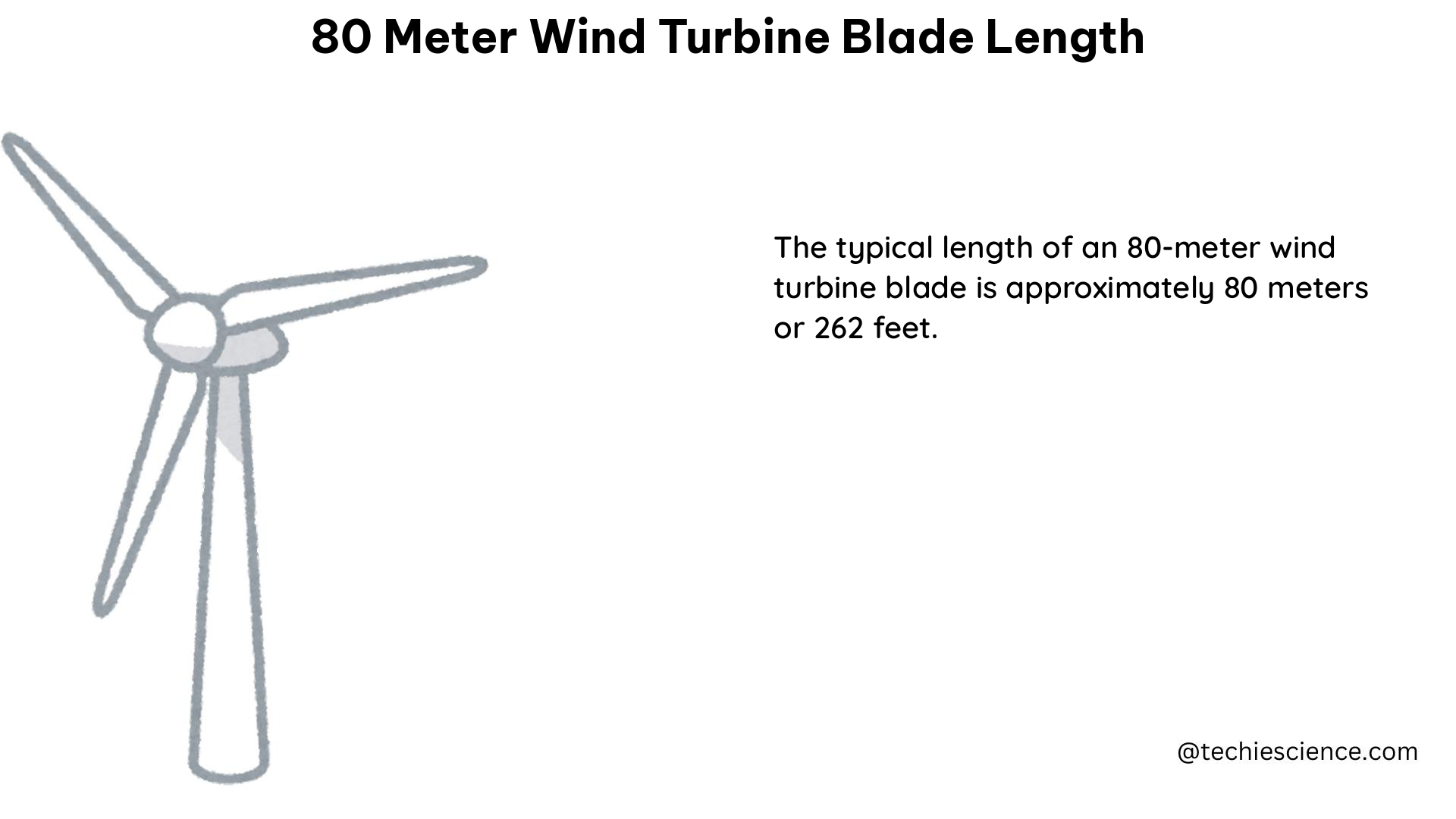The length of a wind turbine blade is a crucial factor in determining the efficiency and power output of the turbine. Taller turbines with longer blades can capture more energy from the wind, but they also come with higher costs and require more space. In this comprehensive guide, we will delve into the technical details and specifications of an 80-meter wind turbine blade, providing you with a wealth of information to understand this essential component of modern wind energy systems.
Understanding the Significance of Blade Length
The length of a wind turbine blade is directly proportional to the swept area of the rotor, which is the area covered by the rotating blades. A larger swept area allows the turbine to capture more wind energy, resulting in higher power output. However, as the blade length increases, the structural loads and fatigue stresses on the blade also rise, necessitating more robust and expensive design and construction.
The 80-meter blade length represents a balance between energy capture, cost, and structural integrity. Offshore wind turbines, which often face harsher environmental conditions, commonly feature blades up to 80 meters in length, capable of generating up to 8 MW of power.
Technical Specifications of an 80-Meter Wind Turbine Blade

Blade Dimensions
- Total blade length: 80 meters (262 feet)
- Blade chord length: 4.5 meters (14.8 feet)
- Blade thickness: 1.8 meters (5.9 feet) at the root, tapering to 0.6 meters (2 feet) at the tip
- Blade weight: Approximately 20 metric tons (22 short tons)
Blade Materials
- Primary materials: Composite materials, such as polyester or epoxy resin, reinforced with glass fiber or carbon fiber
- Advantages of composite materials: High strength-to-weight ratio, corrosion resistance, and fatigue life
Blade Design and Structure
- Aerodynamic profile: Optimized for maximum energy capture, typically a thick, cambered airfoil shape
- Internal structure: Spar caps, shear webs, and skin panels, designed to withstand the high bending and torsional loads
- Lightning protection: Embedded conductive materials to safely dissipate lightning strikes
Sensor Integration
- Sensor integration length: 1900 mm (6.2 feet)
- Sensors for structural health monitoring: Strain gauges, accelerometers, and fiber optic sensors
Performance Characteristics
- Rated power output: Up to 8 MW
- Tip speed ratio: Typically between 6 and 8
- Tip speed: Approximately 80 m/s (180 mph) at the blade tip
Cost Breakdown of an 80-Meter Wind Turbine
The cost of an 80-meter wind turbine can be broken down as follows:
| Component | Percentage of Total Cost |
|---|---|
| Rotor (including blades) | 20% |
| Generator and Electrical Systems | 34% |
| Tower and Nacelle Structure | 15% |
| Foundation and Installation | 15% |
| Other Costs (e.g., grid connection, project development) | 16% |
The rotor, which includes the blades, accounts for a significant portion of the overall wind turbine cost, highlighting the importance of blade design and manufacturing in the overall project economics.
Challenges and Considerations in 80-Meter Blade Design
Designing and manufacturing an 80-meter wind turbine blade presents several challenges, including:
- Structural Integrity: The longer blade length increases the bending and torsional loads, requiring a more robust and complex internal structure to maintain structural integrity.
- Transportation and Installation: Transporting and installing an 80-meter blade can be logistically challenging, often requiring specialized equipment and careful planning.
- Fatigue and Reliability: The blade must be designed to withstand millions of load cycles over its lifetime, ensuring reliable and long-term operation.
- Aerodynamic Optimization: The blade’s aerodynamic profile must be carefully designed to maximize energy capture while minimizing loads and vibrations.
- Composite Material Considerations: The use of advanced composite materials requires specialized manufacturing techniques and quality control measures to ensure consistent performance.
Conclusion
The 80-meter wind turbine blade represents a significant advancement in wind energy technology, offering a balance between energy capture, cost, and structural integrity. By understanding the technical specifications, design considerations, and cost breakdown of this essential component, wind energy professionals and enthusiasts can better appreciate the engineering challenges and innovations that have contributed to the growth of the wind power industry.
References:
- Small Wind Turbine Blade – an overview | ScienceDirect Topics
- A wind rose from the southern lidar measurements at 80 m a.g.l.
- WindSpacing.pdf – Stanford University
- Wind turbine – Wikipedia
- Variable Length Wind Turbine Blade – OSTI.GOV

The lambdageeks.com Core SME Team is a group of experienced subject matter experts from diverse scientific and technical fields including Physics, Chemistry, Technology,Electronics & Electrical Engineering, Automotive, Mechanical Engineering. Our team collaborates to create high-quality, well-researched articles on a wide range of science and technology topics for the lambdageeks.com website.
All Our Senior SME are having more than 7 Years of experience in the respective fields . They are either Working Industry Professionals or assocaited With different Universities. Refer Our Authors Page to get to know About our Core SMEs.